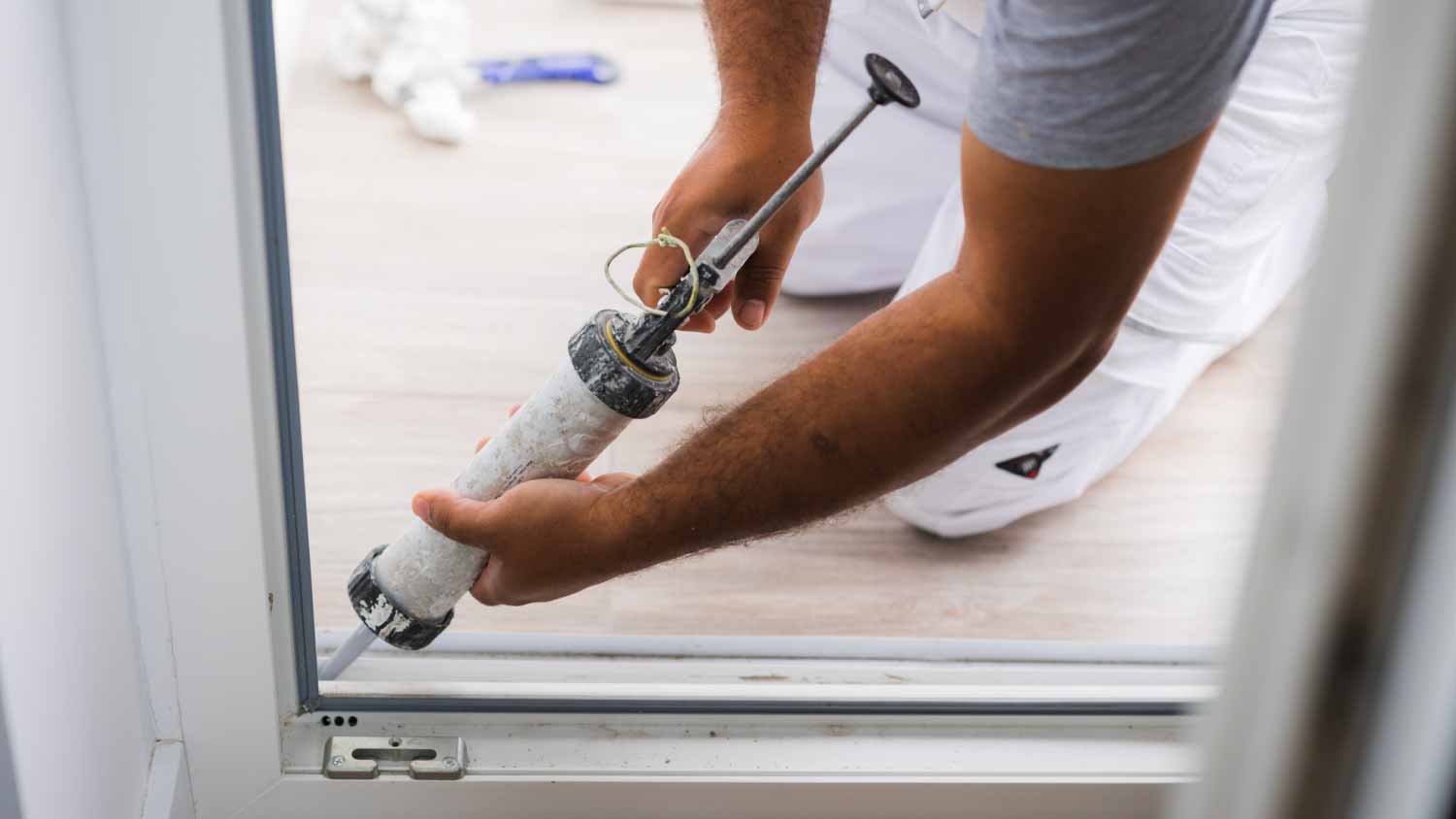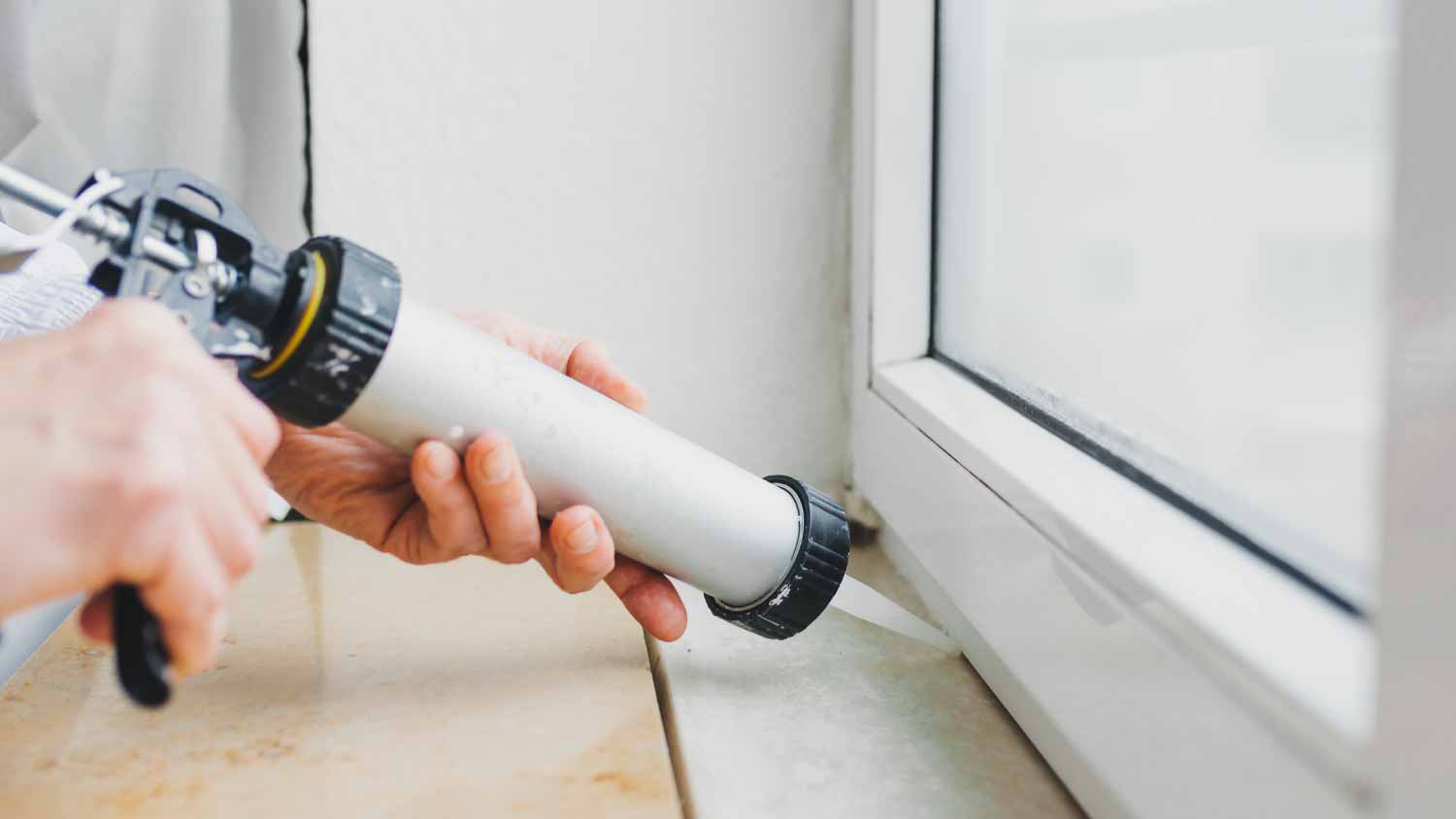
The cost to install porcelain tile depends on materials, size, and whether you DIY or hire a pro. This guide will help you choose the perfect porcelain tile for your home and budget.
Seal off your home efficiency worries


Caulk is ideal for interior projects that need a smooth finish.
Silicone is best for exterior applications and moisture-prone areas.
For a smooth finish and easy application, caulk is the best choice.
When high durability and longevity are needed, silicone is a better option.
Silicone tends to cost more up front than caulk.
When it comes to sealing gaps and cracks around your home, choosing the right material is crucial. Two popular options are caulk and silicone sealant, but how do you know which one is best for your project? Let’s explore the key differences between caulk versus silicone and their respective pros and cons. Keep reading to get a clear understanding of when to use each for optimal sealing results.
The primary differences between caulk and silicone involve their composition and application. Caulk is made from latex and acrylic compounds, and silicone is composed of silicone polymers. Caulk is often used for interior projects for its smooth finish and paintability, and silicone is preferred for exterior applications and areas with high moisture (like your bathroom).

Caulk is a versatile sealing material made from a blend of latex and acrylic compounds. It's commonly used to seal gaps and cracks in various building materials like wood, drywall, and masonry. Caulk is favored for its ease of application and paintability, making it a go-to choice for many interior projects.
| Pros | Cons |
|---|---|
| Easy application | Not as durable |
| Smooth and paintable | Not moisture-proof |
| Dries quickly | May shrink or crack |
| Cost-effective | Higher maintenance needs |
Best for:
Sealing gaps in trim and molding
Filling small cracks in drywall
Sealing around windows and doors (interior)
Minor touch-ups in dry areas
One of the main advantages of caulk is its ease of application. It’s user-friendly and can be smoothed out easily, resulting in a clean finish. This makes it ideal for interior projects where appearance matters.
Additionally, caulk is paintable and dries quickly, allowing you to match it with the surrounding surfaces for a cohesive look and complete your projects in a timely manner. Caulk is also more affordable than silicone, making it a cost-effective option for many projects.
Caulk is not as durable as silicone, meaning it may crack or shrink over time, especially in areas with fluctuating temperatures. Caulk is also less suitable for high-moisture environments because it can deteriorate when exposed to water for prolonged periods. This makes it a less reliable option for exterior projects or wet-area projects like sealing around showers or kitchen sinks. Additionally, caulk requires more frequent maintenance because it can break down, meaning it needs reapplication more often than silicone.

Silicone sealant is a highly durable and flexible material made from silicone polymers. It is renowned for its excellent water resistance and long-lasting performance, making it ideal for both interior and exterior applications. Silicone is often used in areas that are exposed to moisture, such as bathrooms, kitchens, and exterior surfaces.
| Pros | Cons |
|---|---|
| Highly durable | Difficult to apply |
| Long-lasting | Not paintable |
| Moisture-resistant | Higher cost |
| Flexible | Longer drying time |
| Withstands high temps | May need primer |
Best for:
Sealing around bathtubs and showers
Kitchen sinks and countertops
Exterior joints and gaps
Areas exposed to extreme temperatures
Long-term projects requiring high durability
Silicone sealant's primary benefit is its superior durability and flexibility. It can withstand extreme temperature fluctuations and remains flexible without cracking, making it a great pick for both interior and exterior applications.
Silicone's excellent moisture resistance ensures that it performs well in wet environments, such as bathrooms and kitchens. Plus, it adheres well to many different surfaces, including glass, metal, and tile. Its long-lasting, strong seal means that it requires less frequent maintenance compared to caulk.
On the downside, silicone sealant can be more challenging to apply and smooth out than caulk, often requiring more skill and patience. Additionally, it has a longer drying time, which can delay the completion of your project. If you’re worried about whether your skill level will measure up, enlist the help of a company that provides caulking services near you.
Silicone is also not paintable, which can be a limitation if you need to match it with surrounding surfaces. It’s more expensive than caulk, too, making it a higher initial investment, and in some cases, a primer may also be required to ensure proper adhesion, adding another step and cost to the process.
Understanding the key differences between caulk and silicone is essential for making the right choice for your project. Both materials have their strengths and weaknesses, and the best option depends on the specific requirements of your task.
When it comes to durability, silicone sealant outperforms caulk by a significant margin. Silicone remains flexible and intact for many years, even in extreme temperatures and harsh conditions. Caulk, on the other hand, tends to crack and shrink over time, especially when exposed to temperature fluctuations or moisture. If your project demands a durable solution, silicone is the clear winner.
Put another mark in the “silicone” category. Caulk may need reapplication every few years, but silicone can last for decades without losing its appearance and effectiveness. Silicone’s long life span also makes it the lower-maintenance choice in the long run.
Silicone sealant also excels in moisture resistance, making it ideal for bathrooms, kitchens, and exterior jobs. It maintains a strong seal even in wet conditions. Caulk, although useful in dry areas, does not hold up as well in the presence of moisture and is prone to deterioration when exposed to water over time.
Caulk is easier to apply and smooth out than silicone, making it a preferred choice for DIY projects and interior tasks. Its user-friendly nature allows for a neat, professional-looking finish with minimal effort. Silicone, while offering superior performance, requires more skill and patience to apply correctly. If ease of application is a priority, caulk might be the better option.
Most caulk guns have a built-in tool to cut the tip of the caulk tube. Look for a hole on the handle. If there is one, you can stick the tip of the tube in the hole at an angle and squeeze the trigger to cut it open.
In terms of appearance, caulk has the advantage of being paintable. This allows you to blend it seamlessly with the surrounding surfaces, achieving a cohesive look. Silicone, on the other hand, is not paintable, which can be a drawback if the color does not match your decor. However, silicone is available in a variety of colors, which can help in some situations.
Caulk is more affordable than silicone, making it a budget-friendly option for many projects. You can find tubes of caulk starting at $3 to $5. Silicone caulk often starts around $8 with options that reach into the $20-mark. Caulk’s lower cost and ease of use make it an attractive choice for minor repairs and interior applications. Silicone, although more expensive up front, offers better durability and long-term performance, which can justify the higher cost for certain projects.
From average costs to expert advice, get all the answers you need to get your job done.

The cost to install porcelain tile depends on materials, size, and whether you DIY or hire a pro. This guide will help you choose the perfect porcelain tile for your home and budget.

Whether it’s on your floor, walls, or shower, ceramic tile can add style to your space. So, how much does ceramic tile installation cost? Let’s break it down.

You're planning a bathroom remodel, but how much will it cost to retile your bathroom? Read this guide to find out.

If you’re DIYing a tiling installation, you’re probably wondering how much grout you need to buy. It’s a matter of measurements and math that anyone can do.

After removing tile, you’ll need to get rid of stubborn adhesive stuck to the floor. Discover how to remove floor tile adhesive with this DIY guide.

Discover the differences between epoxy grout versus cement grout and choose the best option for your tiling project. Learn about pros, cons, and ideal uses.